Choosing the right material from plexiglass and plastic requires understanding their differences first. Many use the two terms interchangeably despite their unique properties, characteristics, and advantages. This article provides an in-depth comparison of plastic and acrylic sheets to help you make an informed decision for everyday projects.
What is a Plexiglass Sheet?
It’s a generic term or brand name for PMMA. Acrylic is the most universal trade name for plexiglass sheets. Both plexiglass and acrylic indicate the same material. Alternately, acrylic and plexiglass are the same clear plastic.
Specific brand names may include acrylic glass, Perspex, Plexiglas, or acrylic sheet (popular trade names). Some other brands may even use terms like cell cast acrylic (from cell casting) for brand recognition.
History and Development
Plexiglass was first developed in 1928 by chemist William Chalmers. It was first commercialized in the early 1930s. The traditional acrylic plastic material was used in military applications like aircraft canopies and submarine periscopes during World War II.
Later, it revolutionized industries with some remarkable properties. Today plexiglass advancements have led to improved production, exceptional durability, and expanded uses, including architectural innovations and creative designs.

Physical Properties
Plexiglas is more like a lightweight and resilient alternative to traditional glass. The clear cast acrylic sheets are shatter-resistant, becoming a go-to material for various applications, from construction to design. Two noteworthy properties –
- Transparency: A plexiglass sheet has more optical clarity than glass. Yet, it’s lighter and significantly less fragile than the silica compound. It provides elegant aesthetics while ensuring safety where breakability is a concern.
- Durability: It’s also renowned for resistance to impact, weathering, and UV rays. Plexiglass remains highly resilient even in harsh conditions. It can endure prolonged outdoor exposure without yellowing or losing transparency.
Acrylic Sheet Advantages
- Optical Clarity: Plexiglass allows up to 92% of visible light to pass through, making it clearer than glass. Therefore, acrylic is ideal for use in areas with high visual clarity (windows, displays, protective shields).
- Impact Resistance: Plexiglass is 10x more impact-resistant than glass. It remains intact upon impact, reducing the risk of injuries. Even upon breaking, it generates dull edged pieces with no dangerous shards.
- Lightweight: With a density of 1.18 g/cm³, Plexiglas is significantly lighter. It allows easy handling, transportation, and installation for applications like aircraft windows and automotive windshields.
- Weather Resistance: Plexiglass exhibits high resistance to UV radiation and harsh weather. The polymer retains its clarity and structural integrity after prolonged exposure to outdoor elements.
- Ease of Fabrication: The glass plates can be easily shaped, cut, and molded. It can be drilled, thermoformed, and routed into intricate designs. That’s why it’s a favorite among designers, architects, and artists.
- Chemical Resistance: Acrylic is also resistant to diluted acids, bases, and aliphatic hydrocarbons. It’s suitable for laboratory and medical settings (safety glass) where chemical exposure occurs daily.
- Energy Efficiency: Extruded acrylic sheets have favorable thermal insulating properties. Its use in energy-efficient building designs helps reduce heat transfer, contributing to lower energy consumption.
- Durability: Plexiglass is 17x stronger than regular glass. Its excellent durability makes acrylic products ideal for long-lasting materials (construction, machine guards, and automotive).
- Versatility: From skylights and signage to sculptures and medical devices, plexiglass finds applications across diverse industries. Its adaptability ensures functionality and aesthetics in various contexts.
- Maintenance: Cleaning plexiglass is straightforward. All you need is mild soap and warm water. Special cleaning solutions are available to maintain its pristine appearance without causing minor scratches.

Limitations of Acrylic Sheets
- Scratch Susceptibility: Scratch resistant plexiglass may experience reduced optical clarity over time. Even frequent contact with abrasive materials can lead to visible wear.
- Flammability: Flammable plexiglass has a higher ignition temperature than some plastics. However, it can still ignite under certain conditions, making it a fire-safety concern.
- Thermal Expansion: Plexiglass has a high thermal expansion coefficient. It expands and contracts more with temperature changes, leading to potential warping or cracking.
- Chemical Sensitivity: Certain chemicals (solvents and cleaners) can damage plexiglass surfaces, causing clouding or crazing. This limits its use in laboratory environments.
- Environmental Concerns: Plexiglass is made from petroleum materials, which raises concerns about its sustainability. It can be recycled, but the process isn’t efficient or widespread.
- Cost: Plexiglass can become more expensive, especially in thicker or custom configurations. This cost factor may limit its applicability in any budget-sensitive projects.
What is Plastic?
Plastic is an umbrella term that contains a wide array of synthetic polymers under its canopy. Such compounds (polyethylene, polyvinyl chloride (PVC), and polypropylene) derive from natural resources like oil and natural gas through chemical processes.
Common Plastic Types
Exceptionally versatile plastics can take various forms – rigid or flexible, transparent or opaque. Countless everyday products rely on different plastics, from packaging and household to construction and advanced technologies.
- Rigid Plastics: PVC, ABS, and Polycarbonate.
- Flexible Plastics: Polyethylene and Vinyl.
- Consumer Plastics: Polystyrene and Polypropylene.
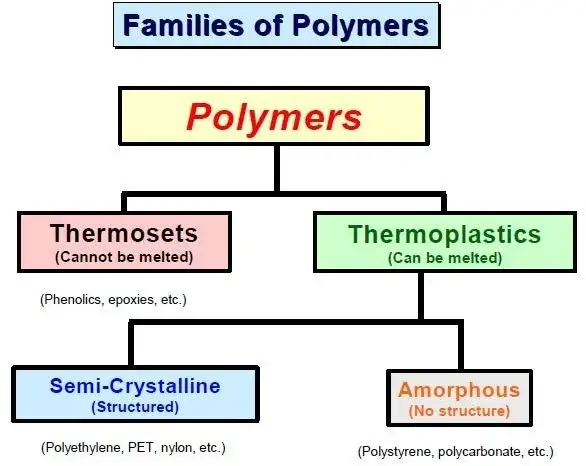
Properties of Plastic
Plastics have transformed industries to improve daily lives on an unprecedented scale. However, their environmental footprint remains a growing concern. Balancing its benefits with sustainability has been a critical challenge for the future.
- Versatility: Its universal adaptability is literally unmatched. Different formulations can accommodate many applications. You can choose from soft and pliable materials to hard and rigid ones.
- Strength and Lightweight: Plastics hold an impressive balance of strength and lightweight properties. Any applications requiring durability and portability have to look for suitable plastics first.
- Cost-effectiveness: Plastic is highly economical, enabling mass manufacturing at lower costs than metal or glass. Its efficiency has fueled plastics’ widespread use across many industries.
Advantages of Plastics
- Lightweight: Plastics are significantly lighter than metals and glass. For example, polypropylene has a density of approximately 0.9 g/cm³, reducing transportation costs and energy consumption.
- Durability: Plastics are resistant to corrosion, moisture, and many chemicals. This makes them ideal for long-term uses. For instance, PVC pipes can last up to 100 years in underground installations.
- Cost-Effectiveness: The production is more economical than many alternatives. For example, the cost of manufacturing plastic packaging is often 40% lower than that of glass or metal packaging.
- Energy Efficiency: Plastics contribute to energy savings in various applications. Using plastic automobile parts can reduce the weight by up to 50%, improving fuel efficiency by approximately 25%.
- Versatility: Plastics can be easily formed and molded into any shape, allowing design-based applications. From medical devices to consumer electronics, their adaptability remains almost unmatched.
- Insulation Properties: Plastics have been great insulators of heat and electricity. It makes the materials indispensable in constructing energy-efficient buildings and electrical appliances.
- Hygiene and Safety: Contaminant-resisting plastics are also capable of undergoing sterilization. Single-use plastic syringes have significantly reduced the risk of infections in healthcare settings.
- Environmental Benefits in Specific Contexts: Surprisingly, plastics can offer sustainable advantages from responsible uses. Packaging can extend the shelf life of food by up to 50%, reducing waste.
- Recyclability: Many plastics (like PET and HDPE) are recyclable. Recycling one ton of plastic can save approximately 5,774 kWh of energy, 16.3 barrels of oil, and 30 cubic yards of landfill space.
- Applications in Renewable Energy: Plastics can be crucial in renewable energy. Lightweight plastic components in wind turbine blades and solar panels can enhance efficiency.

Downsides of Plastics
- Environmental Pollution: Plastics have been major contributors to pollution. Globally, over 300 million tons of plastic waste are generated annually, with only 9% recycled.
- Microplastics and Nanoplastics: Plastics degrade into microplastics (particles smaller than 5 mm) and nanoplastics (particles smaller than 1 µm). These particles are ingested by marine life, entering the food chain and potentially affecting human health.
- Greenhouse Gas Emissions: The production and lifecycle of plastics contribute to greenhouse emissions. Plastics accounted for 3.4% of global emissions 2019, equivalent to 1.7 gigatons of CO2 annually.
- Health Risks: Plastics contain additives and chemicals like phthalates and BPA. They can leach into food and water. Such chemicals are linked to developmental, reproductive, and neurological disorders.
- Energy-Intensive Production: Plastics from fossil fuels and their production is quite energy-intensive. The plastics industry will account for 20% of global oil consumption and up to 15% of carbon emissions by 2050.
Main Differences Between Plexiglass and Plastic
Differentiating the two may seem easy, given the generic definition and properties. However, the key factors that set them apart go well beyond those simple statements. Let’s look at how plastic and plexiglass differ in their cores.
a. Material Composition
Plexiglass: Polymethyl methacrylate (PMMA) is a synthetic polymer from methyl methacrylate (MMA) monomers. Controlled polymerization of MMA creates long chains of PMMA. Either the extrusion or casting process is adopted to conduct the polymerization process.
Plastic: It refers to an extensive category of synthetic or semi-synthetic polymers. Those materials are primarily from petrochemical sources (crude oil or natural gas). Unlike a plexiglass sheet, plastics get tailored through additives and fillers to achieve the desired characteristics.
b. Transparency
Plexiglass: The acrylic material possesses exceptional optical clarity. It transmits approximately 92% of light, making it as clear as traditional glass. Such a higher level of transparency remains intact over time due to its resistance to yellowing, scratches, and weathering.
Plastics: Being a broad category, transparency varies greatly depending on the polymer composition. Some plastics (polycarbonate and PET) offer sufficient transparency (around 80% – 90% transmission). Meanwhile, options like polyethylene are opaque or translucent.
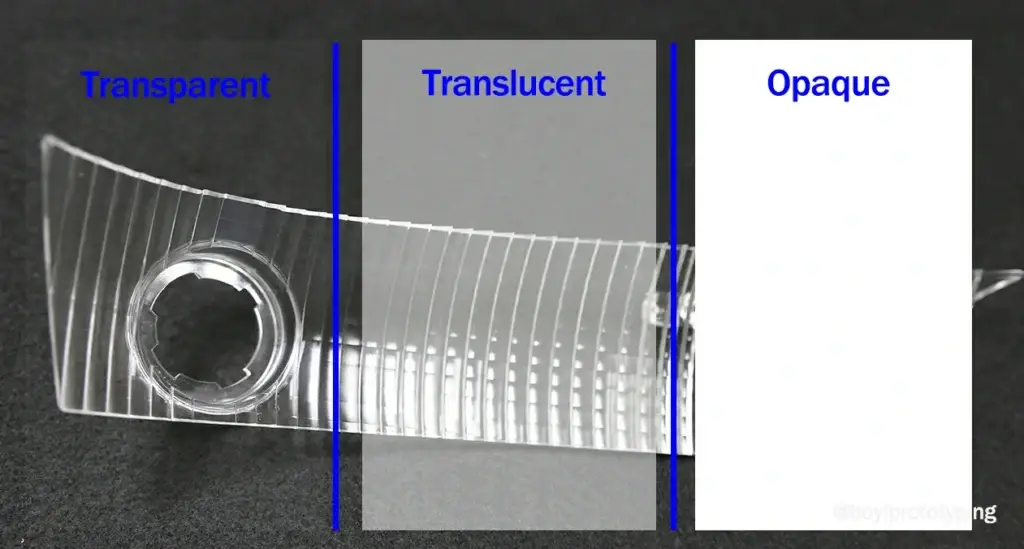
c. Durability and Strength
Plexiglass: Polymethyl methacrylate (PMMA) is the chemical name for clear acrylic sheets. It’s a reliable substitute for glass in many outdoor applications. The impressive strength and durability can withstand environmental challenges from prolonged exposure.
Plastic: Featuring lots of polymers, plastics exhibit variable levels of durability based on specific types. Some plastics (for example, polycarbonate) approach the durability of Plexiglas. But polystyrene or polyethylene are more prone to wear and damage.
d. Resistance to UV
Plexiglass: Plexiglass is inherently UV-resistant due to its chemical composition. It contains properties that prevent UV from penetrating the versatile material. High quality plexiglass doesn’t yellow, become brittle, or lose transparency when exposed to prolonged sunlight.
Plastic: The UV resistance of plastics varies widely depending on the type and formulation. General-purpose plastics (polyethylene and polystyrene) are prone to UV degradation. Some plastics, treated with stabilizers or additives, can enhance UV resistance.
e. Resistance to Weathering
Plexiglass: Plexiglass exhibits excellent resistance to weathering. Thus, it can maintain the structural and aesthetic properties under rain, snow, wind, and temperature fluctuations. The surface resists moisture absorption and prevents damage from environmental contaminants.
Plastic: Likewise, the weather resistance of plastics depends heavily on the specific polymer. PVC shows good weather resistance, but polyethylene has moderate resistance and becomes brittle upon prolonged weather exposure. Also, polystyrene holds poor resistance.
f. Weight
Plexiglass: Acrylic is universally adopted due to its lightweight nature. It’s approximately 50% lighter than traditional glass without the heft. Such reduction in weight provides great practical advantages like easy handling and minimal load designs.
Plastics: The weight of plastic sheets varies widely depending on the specific polymer used. Flexible plastics (polyethylene and vinyl) are usually lighter than rigid plastics (polycarbonate or ABS). Manufacturers can adjust the weight with fillers, reinforcements, or additives.
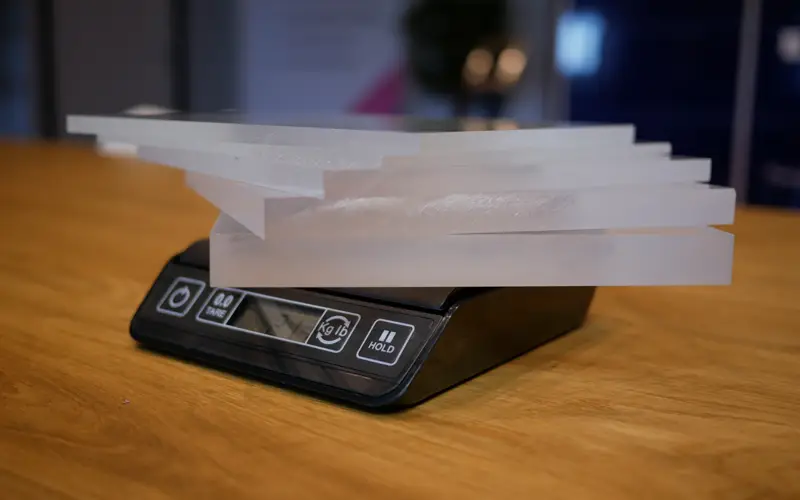
g. Cost Comparison
Plexiglass: Plexiglass is more expensive than plastic by default. Its high production cost is attributed to the manufacturing process, premium quality, and specialized applications. Depending on the thickness and quality, Plexiglas costs $5 – $10 per square foot.
Plastic: The broad category is more cost-effective due to lower production costs against their extensive availability. Some key cost-related factors include – mass production, grade variation, and additives for customization. The cost ranges from $0.50-$3 per square foot.
Common Uses of Plexiglass
Plexiglass has been a versatile and durable material. Therefore, various industries harness its exceptional clarity, lightweight properties, and resistance to impact, UV rays, and weathering.
- Windows and Skylights: Plexiglass provides a transparent yet lightweight alternative to glass. Its UV-resistant properties ensure long-term clarity and durability, even under direct sunlight.
- Storefront Signs: Plexiglass has become a highly popular choice for advertising signage due to its ability to maintain vibrant colors and clear visuals over time.
- Partitions and Barriers: It’s widely used across office partitions and protective barriers in public spaces. The material enables strength and visual appeal while maintaining a sense of openness.
- Display Cases and Shields: Museums, retail displays, and exhibitors extensively rely on plexiglass-made cases to protect/display valuable items with protection.
- Automotive: Plexiglass makes it to certain vehicle windows and lighting components. Its optical clarity enhances visibility and light diffusion, contributing to safer driving conditions.
- Lampshades and Picture Frames: Craftsmanship also uses it for aesthetics and easy customization. Its lightweight nature simplifies handling for an elegant finish.
- Aerospace: Plexiglass makes transparent covers for instruments and aircraft windows. It can withstand high pressure and extreme temperatures, which is highly relevant to aviation.
- DIY Projects: Hobbyists use Plexiglas for many creative projects, from furniture to art installations. Its versatility and durability enable endless possibilities for innovation.
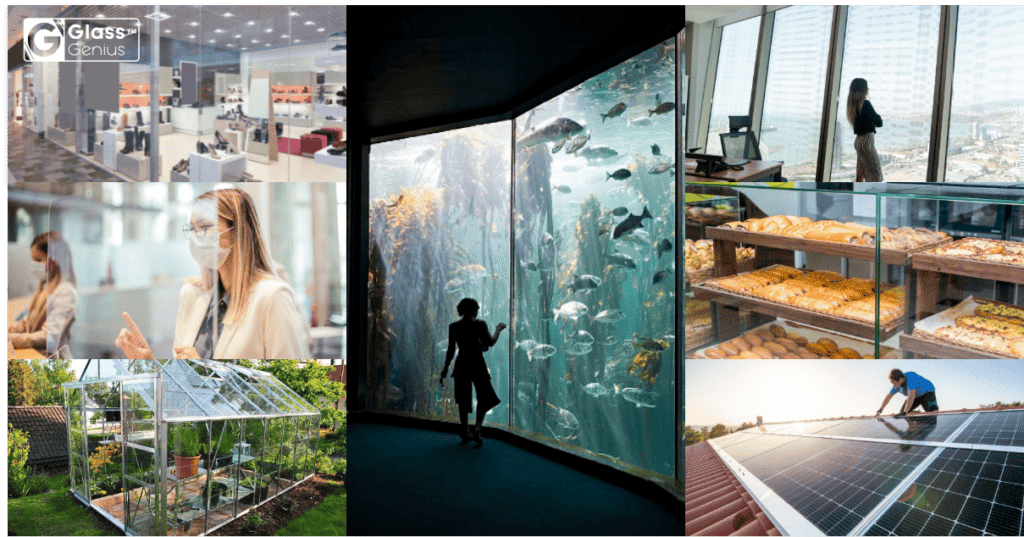
Common Uses of Plastic
Adaptability, lightweight properties, and cost-effectiveness have made plastics indispensable across industries. It’s impossible to think of many everyday items without harnessing its power.
- Pipes and Wiring: Polyvinyl chloride (PVC) has extensive, universal, and strategic applications across piping as well as electrical wiring. PVC is robust, insulating, and resistant to corrosion.
- Under-the-Hood Parts: Heat-resistant plastics like polyamide (nylon) make components like engine covers, air intakes, and connectors.
- Plastic Bags and Films: Widely used in retail and agriculture, bags and films (made from polyethylene) have been a lightweight option. They’re also cost-efficient in terms of carrying goods.
- Household Items: Everyday products like storage bins, laundry baskets, and cleaning tools are often made from plastic. The requirements of robustness and low cost are fulfilled rather comfortably.
- Food Containers: Polypropylene and high-density polyethylene (HDPE) can store food safely. It’s because the material remains resistant to moisture and contaminants.
- Dashboard Components: Plastics (ABS and polypropylene) often make it to dashboards to combine strength with a sleek finish.
- Bottles: Plastic bottles, mostly made from polyethylene terephthalate (PET), are well-preferred for carrying water, beverages, and other liquids. The end products are durable, transparent, and lightweight.
- Insulation and Flooring: Plastics like expanded polystyrene (EPS) and vinyl offer thermal insulation. That’s why they have applications related to flooring for durability and cost efficiency.
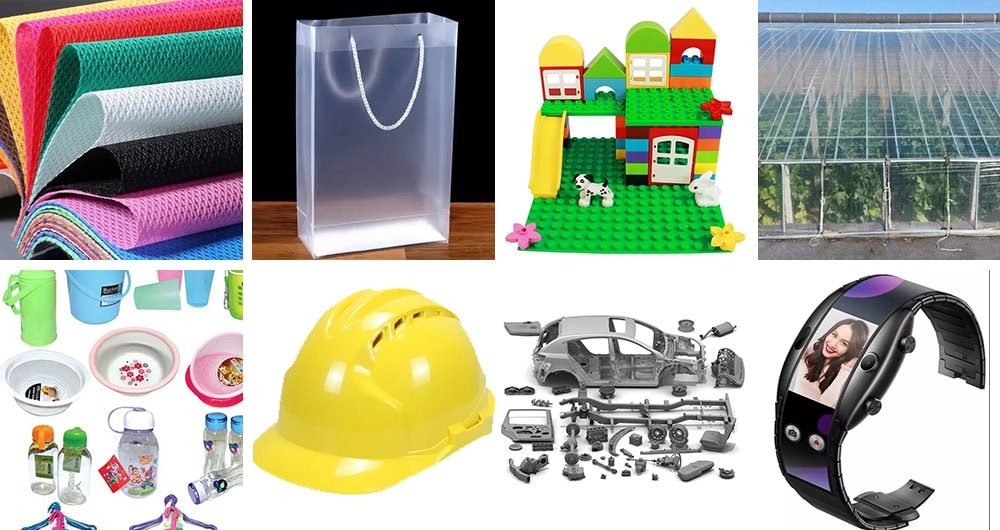
Comparison Table: Difference Between Acrylic and Plastic
| Feature | Plexiglass | Plastic |
|---|---|---|
| Weight | Slightly heavier than flexible plastics | Weight varies from lightweight to moderately heavy |
| Material Composition | Made from polymethyl methacrylate (PMMA) | Refers to a group of synthetic polymers |
| Transparency | Crystal-clear with 92% light transmission | Some are clear, while other materials are opaque |
| Durability | Highly durable; resistant to impact, weather, and UV | Durability ranges from brittle to highly impact-resistant |
| Strength | Strong, with superior impact resistance | Strength varies widely; rigid plastics are strong |
| Flexibility | Rigid material with limited flexibility | Extremely versatile; available in rigid and flexible forms |
| Recyclability | Recyclable and environmentally sustainable | Recyclability depends on the type; most are harmful |
| Maintenance | Low maintenance due to its resistance to yellowing and degradation | Some plastics require frequent replacement in high-exposure environments |
| Cost | Higher upfront cost | More economical |
| Applications | Best for windows, skylights, signage, display cases, and protective shields | Ideal for packaging, disposable items, goods, construction, and automotive/aerospace parts |
| Environmental Impact | Longer lifespan with superior recyclability | Significant concerns with single-use plastics |
Conclusion
The decision between plexiglass and plastic, based on their significant differences, always depends on your specific project needs. Choose plexiglass for transparency, durability, weather resistance, and long-term reliability. These factors define the biggest difference between the two. Or find the right plastic for cost efficiency, flexibility, or mass production.
Contact JUMEI for Acrylic Plexiglass Solution
Are you looking for the right plexiglass supplier for certain project(s)? Get in touch with Jumei Acrylic Manufacturing for the perfect solutions. Contact us to learn how our expertise, industry-leading innovations, and years of experience meet your requirements.





